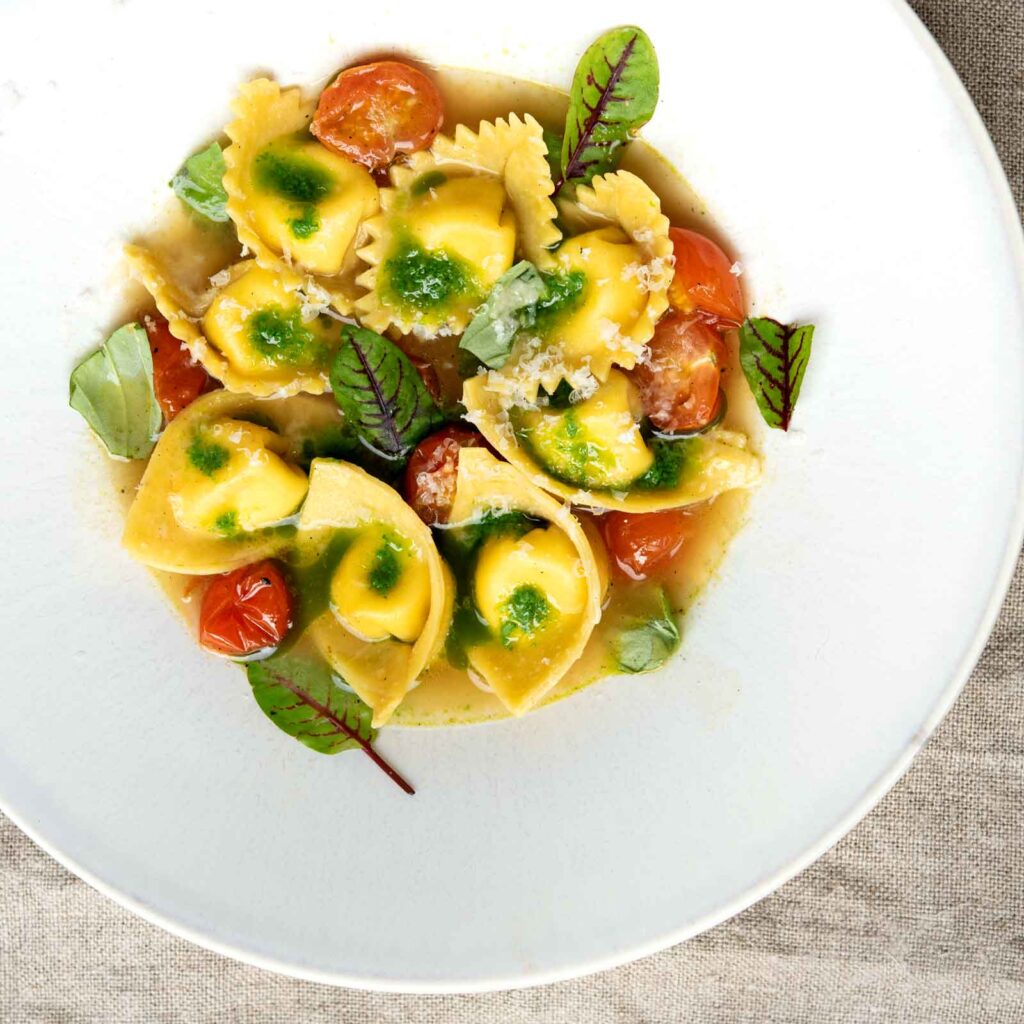I’ve seen this shape referred to as tortelletti, so will go with that until I learn otherwise. Theses stuffed pastas are traditionally from the Lombardy, Emilia-Romagna and Tuscany regions of Italy.
To form them, you cut the dough into 2 1/2 – 2 3/4-inch squares, pipe a teaspoon-sized filling in the middle of each square, fold them into triangles pressing out any excess air, then bring the two pointed edges together and pinch to seal. For a decorative element, you can cut the edges with a fluted pasta wheel. Repeat.
I kept the filling really simple — creamy burrata, ricotta, nutmeg, salt and pepper. The burrata gives the filling a nice oozy-cheese-y mouthfeel. Since they’re delicate in flavor, I kept the accompaniments fairly simple — I sautéed some cherry tomatoes in homemade chicken stock, then finished the dish with basil oil, some fresh herbs from the garden (a few leaves of sorrel and basil) and lastly, a light sprinkling of freshly grated Parmesan.
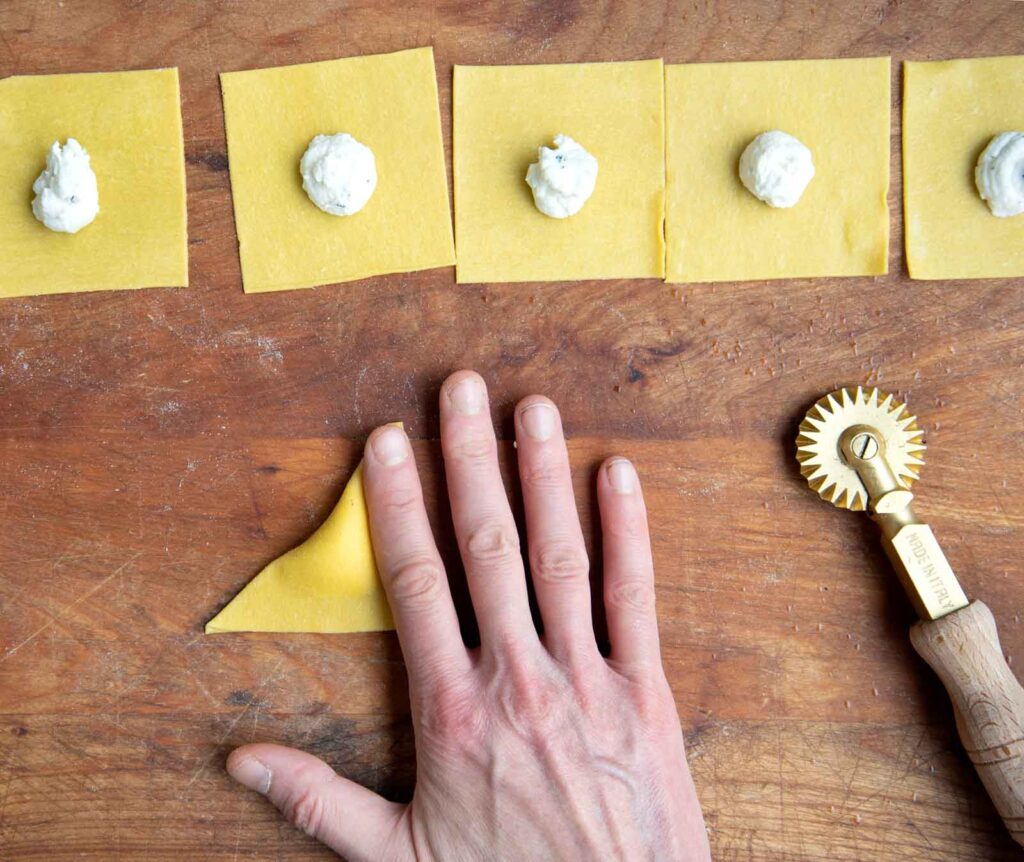
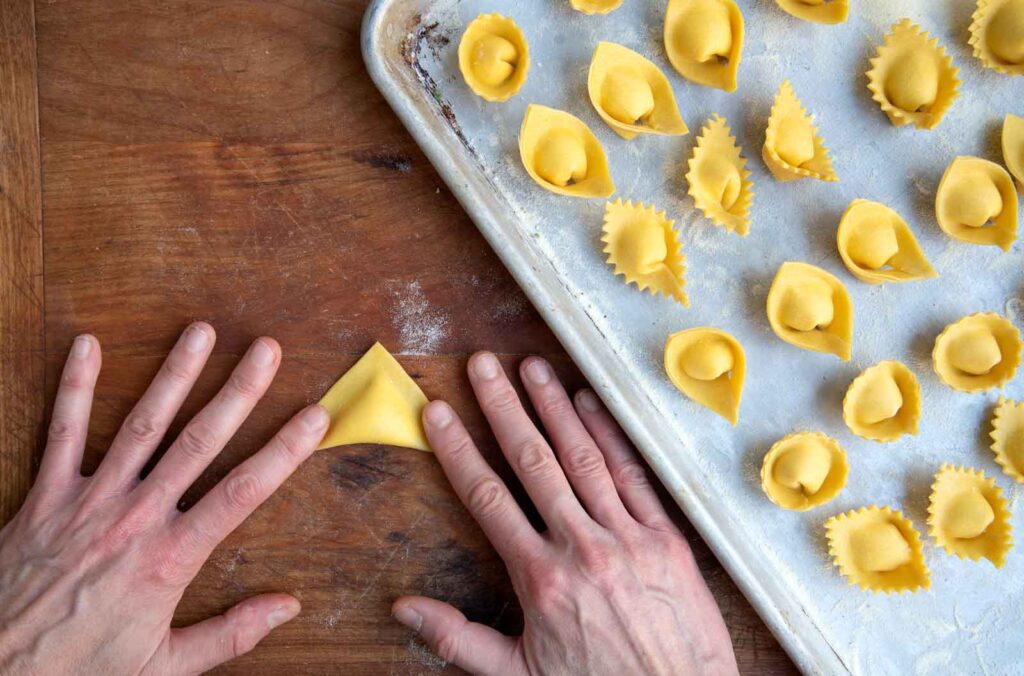

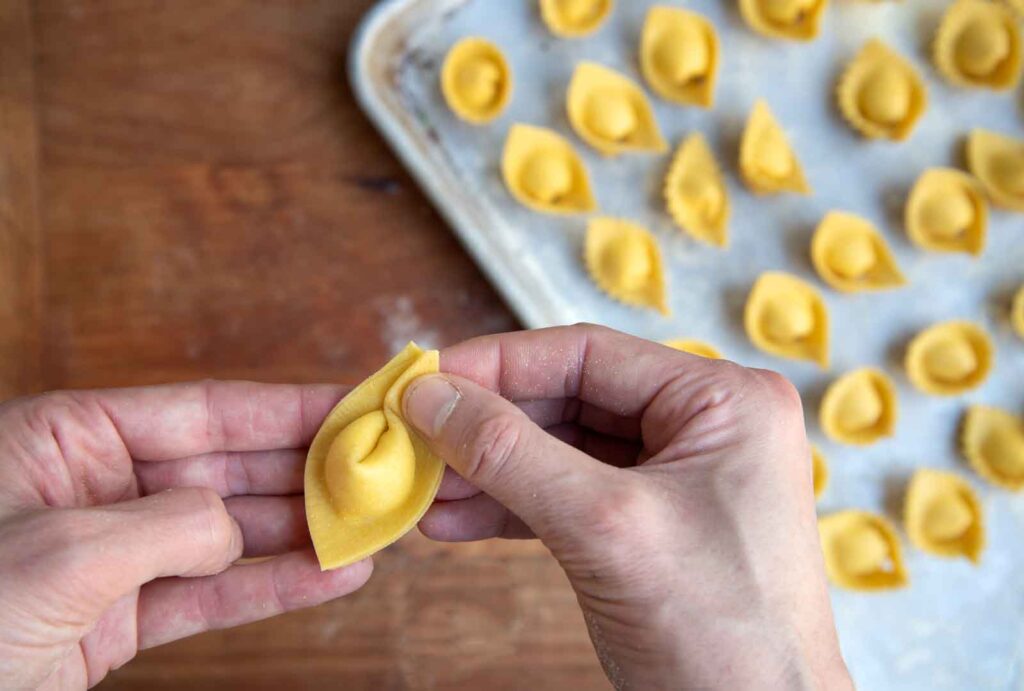
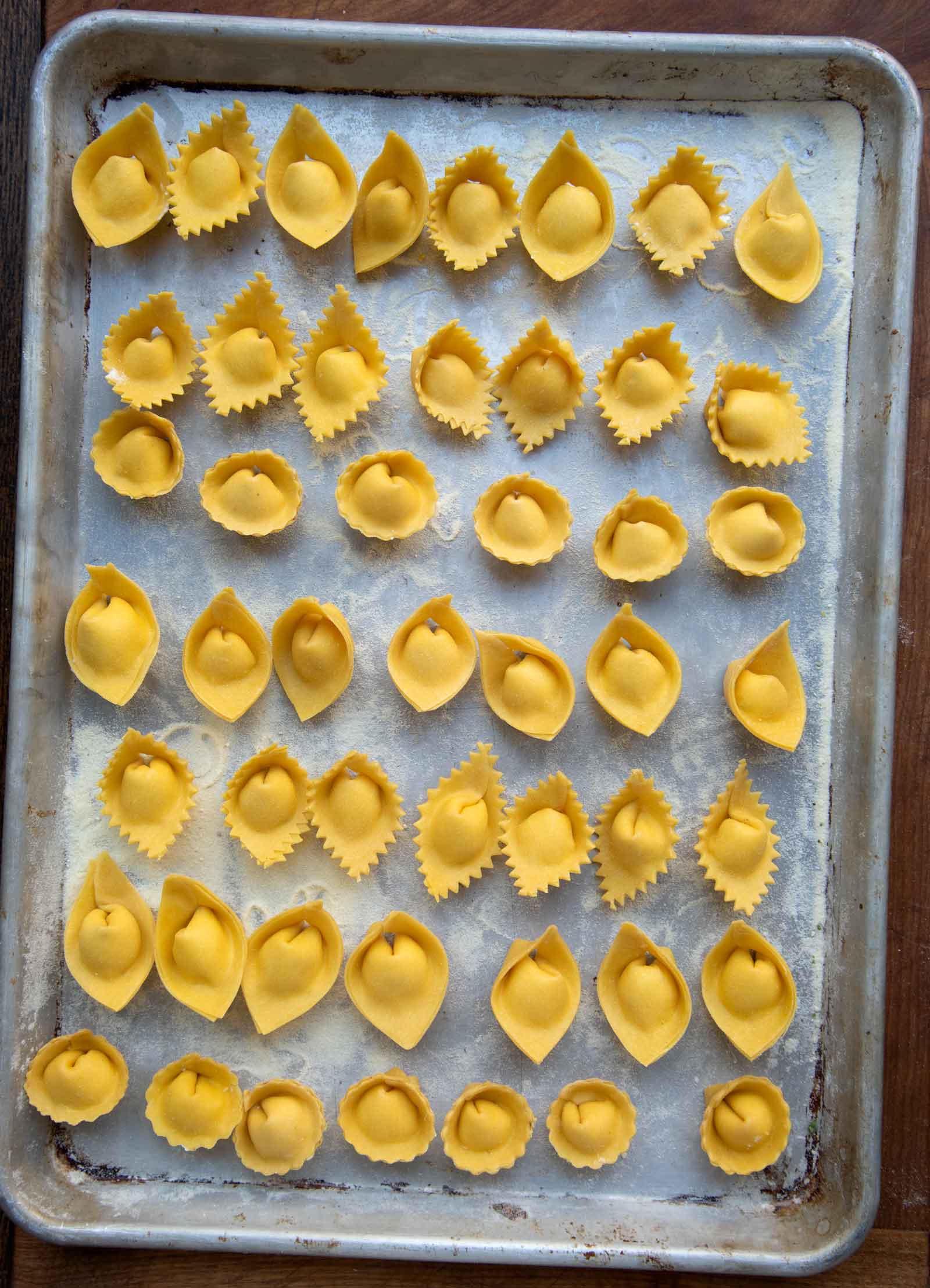


Burrata-Ricotta Tortelletti
Ingredients
Burrata-Ricotta Filling:
- 4 ounces (1/2 cup) ricotta
- 8 ounces burrata
- salt and pepper
- nutmeg
Pasta Dough:
- 200 grams 00 flour
- 50 grams fine semolina flour
- 6 large egg yolks
- 1 whole egg
- 1 1/2 tsp olive oil
- pinch of salt
Instructions
- For the filling: In a medium bowl, mix the ricotta and burrata. Season with salt, pepper and a few gratings of nutmeg. Transfer filling to a piping bag.
- For the dough: Place the flour on a dry, clean work surface and form it into a mound. Create a large shallow well in the middle, making sure the walls are high enough to prevent the eggs from escaping.Add the yolks, whole egg, olive oil and pinch of salt into the well. With a fork, beat the eggs; be careful not to disturb the walls of the flour. Once the eggs are well beaten, begin to incorporate the flour walls into the egg mixture. Continue incorporating the flour with the eggs with your fork until you have a shaggy, solid mass. At this point, using your hands, start folding and forming the dough, incorporating the rest of the flour until you have a stiff, solid mass (removing any dry clumps of flour).Knead the dough. Drive the palms of your hand into the dough, pushing the dough forward. Continue, rotating the dough and folding the dough over its self, which helps to incorporate air pockets into the dough. Repeat until the dough is firm and bouncy and has a smooth, silken texture, about 10 minutes. Wrap the dough in plastic and let rest 30 minutes.
- Forming the Tortelletti: Lightly flour your work surface. Cut off 1/4 of the dough, leaving the rest covered. Flatten the piece of dough with a rolling pin. Next, run the dough through your pasta machine starting with the largest setting (typically ‘0’ or ‘1’). Run it one to two times through each successive pasta roller setting until very thin and translucent, about 1/16th of an inch thick (setting #6 or #7 with my KitchenAid roller attachment). Cut the dough into 2 1/2 - 2 3/4-inch squares. Pipe teaspoon-sized filling in the middle of each square. Fold the square into a triangles pressing out any excess air (for fluted edges, cut the long edges with a fluted pasta wheel). Bring the two pointed edges together and pinch to seal. Place the ravioli on a baking sheet lightly floured with semolina flour to prevent sticking. Repeat with the rest of your filling and dough. Use right away or let dry out a bit then place the sheet pan in the freezer. When the pasta are frozen, transfer to an air-tight container or zip-lock freezer bag.
- To Cook: Bring a pot of salted water to a boil. Drop in the pasta and cook until tender, about 4 minutes.

